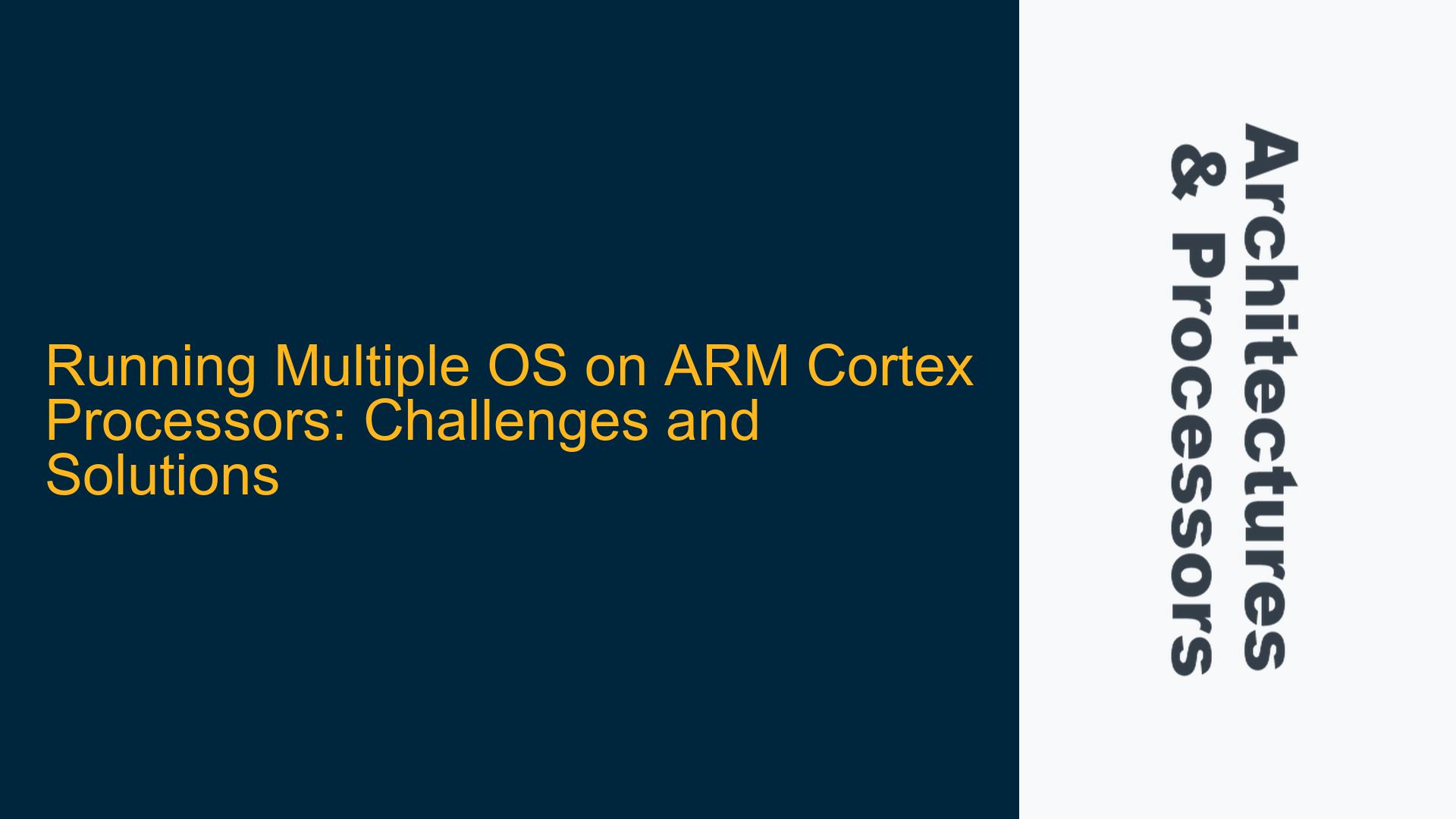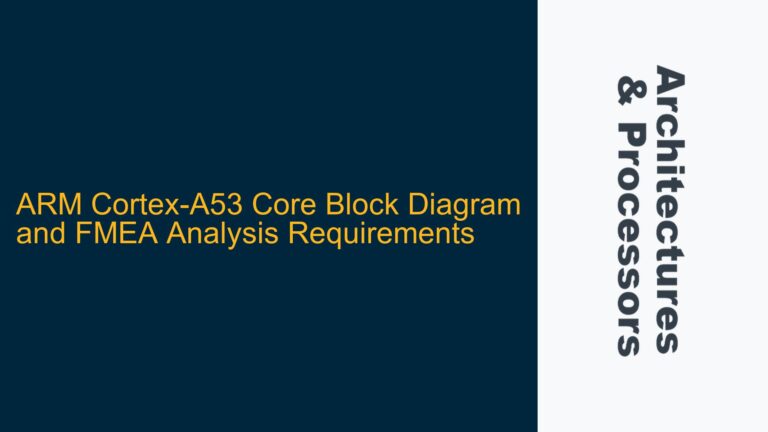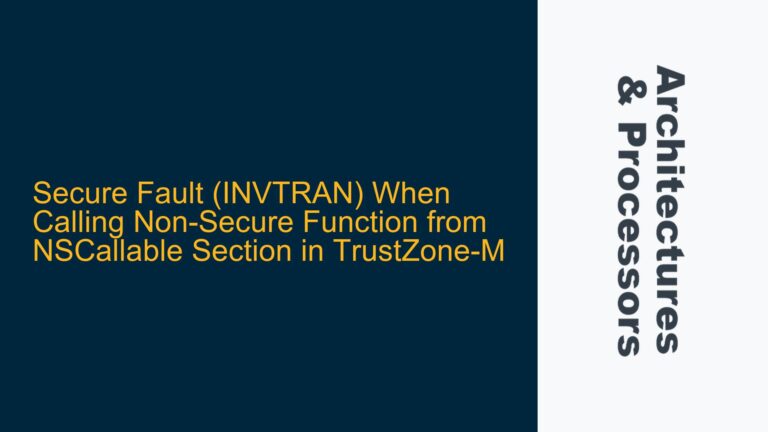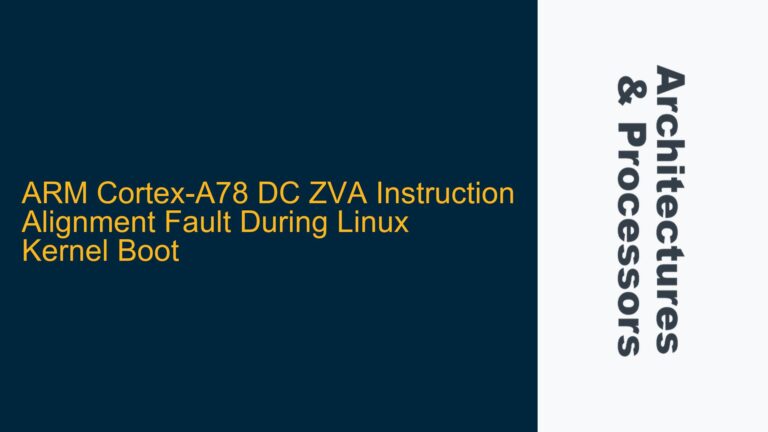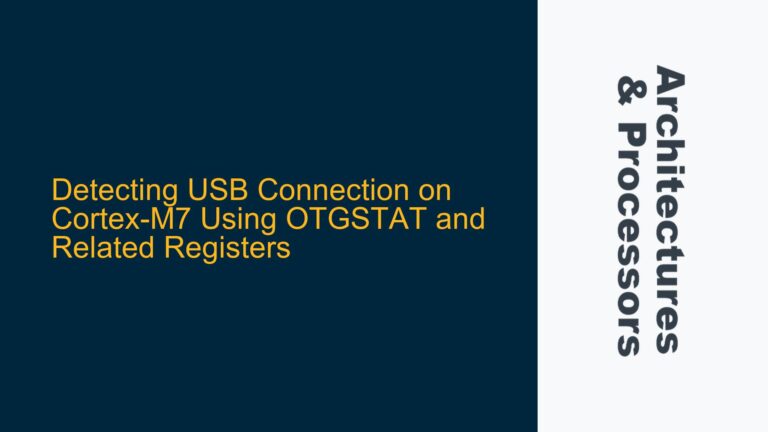ARM Cortex Processor Limitations for Multi-OS Implementations
The ARM Cortex family of processors is widely used in embedded systems due to its efficiency, scalability, and performance. However, running multiple operating systems (OS) on a single ARM Cortex processor presents significant challenges, particularly when considering the differences between Cortex-M and Cortex-A series processors. The Cortex-M series, which includes the M4 and M7, is designed for real-time, low-power applications and lacks the memory management unit (MMU) required for running full-fledged operating systems like Linux, Windows, or Android. While uCLinux, a lightweight version of Linux, can run on Cortex-M4 and M7 processors, it is not suitable for running multiple OS instances simultaneously due to resource constraints and the absence of hardware virtualization support.
In contrast, the Cortex-A series, which includes processors like the A53, A57, and A72, is designed for high-performance applications and includes an MMU, making it capable of running full Linux, Windows, and Android. However, even with the Cortex-A series, running multiple OS instances requires careful consideration of hardware and software architecture. The primary challenge lies in ensuring proper isolation between OS instances to prevent resource conflicts and ensure system stability. This is particularly critical in automotive applications, where safety and reliability are paramount.
The discussion highlights the importance of selecting the appropriate ARM Cortex processor for multi-OS implementations. Cortex-M processors are unsuitable for running multiple OS instances due to their limited resources and lack of MMU. Cortex-A processors, on the other hand, are better suited for this purpose but require additional hardware and software mechanisms, such as hypervisors, to manage resource allocation and isolation effectively.
Hypervisor-Based Solutions for Multi-OS Isolation
One of the most effective solutions for running multiple OS instances on an ARM Cortex processor is the use of a hypervisor. A hypervisor is a software layer that enables the creation and management of virtual machines (VMs), each of which can run a separate OS instance. Hypervisors provide hardware abstraction and resource isolation, ensuring that each OS instance operates independently without interfering with others. This is particularly important in automotive applications, where different OS instances may be responsible for critical functions such as infotainment, telematics, and advanced driver-assistance systems (ADAS).
PikeOS, mentioned in the discussion, is an example of a real-time operating system (RTOS) that includes a hypervisor for multi-OS support. PikeOS allows multiple OS instances to run concurrently on a single processor, with each instance isolated in its own virtual machine. This approach provides several advantages, including improved resource utilization, simplified system design, and enhanced security. However, implementing a hypervisor-based solution requires careful planning and consideration of several factors, including processor capabilities, memory requirements, and performance overhead.
The Cortex-A series processors are well-suited for hypervisor-based multi-OS implementations due to their support for hardware virtualization extensions, such as ARM Virtualization Extensions (VE). These extensions enable efficient virtualization by providing hardware support for tasks such as memory management, interrupt handling, and I/O virtualization. However, even with hardware support, the performance impact of running multiple OS instances must be carefully evaluated, particularly in resource-constrained environments.
In addition to hypervisors, other approaches for multi-OS isolation include containerization and partitioning. Containerization involves running multiple OS instances within isolated user-space containers, while partitioning involves dividing the processor’s resources into separate partitions, each running a different OS instance. However, these approaches have limitations compared to hypervisors, particularly in terms of resource isolation and security.
Implementing Multi-OS Solutions on ARM Cortex Processors
Implementing a multi-OS solution on an ARM Cortex processor requires a systematic approach that addresses hardware selection, software architecture, and system integration. The first step is to select the appropriate processor based on the specific requirements of the application. For automotive applications, Cortex-A series processors are generally the best choice due to their support for hardware virtualization and MMU. However, the specific processor model should be selected based on factors such as performance requirements, power consumption, and cost.
Once the processor has been selected, the next step is to design the software architecture. This includes selecting the appropriate hypervisor or other isolation mechanism, as well as the operating systems to be used. The hypervisor should be chosen based on its compatibility with the selected processor, its performance characteristics, and its support for the required OS instances. For example, PikeOS is a popular choice for automotive applications due to its real-time capabilities and support for multiple OS instances.
The operating systems should be selected based on their suitability for the specific tasks they will perform. For example, Linux may be used for infotainment and telematics, while an RTOS may be used for ADAS. The operating systems should also be configured to minimize resource usage and ensure compatibility with the hypervisor.
System integration is the final step in implementing a multi-OS solution. This involves integrating the hardware and software components, configuring the hypervisor and operating systems, and testing the system to ensure proper operation. Testing should include performance testing to evaluate the impact of running multiple OS instances on system performance, as well as stress testing to ensure system stability under various conditions.
In conclusion, running multiple OS instances on an ARM Cortex processor is a complex but achievable task that requires careful consideration of hardware and software architecture. Cortex-A series processors are generally the best choice for multi-OS implementations due to their support for hardware virtualization and MMU. Hypervisor-based solutions, such as PikeOS, provide effective resource isolation and management, making them well-suited for automotive applications. However, implementing a multi-OS solution requires a systematic approach that addresses hardware selection, software architecture, and system integration to ensure optimal performance and reliability.
